Did you know that 85% of AI product creators attribute their success to a well-structured tech stack?
As a seasoned AI content strategist with over a decade of experience, I’ve navigated the evolving landscape of AI tools to identify the most impactful ones for creators. When I first started integrating AI into my workflow, selecting the right tools felt overwhelming.
This journey has led me to curate the ultimate AI Creator Tech Stack. With countless AI tools available, determining which ones truly enhance productivity and drive innovation can be daunting.
In this comprehensive review, we’ll explore AI product creators’ top tools, helping you build a tech stack that aligns with your creative and technical needs.
Backed by extensive research and hands-on experience, this guide ensures you make informed decisions for your AI projects. Whether you’re a seasoned AI professional or just starting, discover the tools to transform your creative process.
Related Content
Understanding the AI Creator Tech Stack
What is a Tech Stack?
A tech stack combines software tools and the technology creators and developers employ to develop and deploy their projects. For AI product creators, the tech stack encompasses tools for machine learning, data processing, collaboration, deployment, and more.
A well-structured AI tech stack streamlines workflows, enhances productivity, and ensures seamless integration between tools and platforms.

Importance of a Well-Structured AI Tech Stack
A meticulously curated tech stack is crucial for AI creators for several reasons:
- Efficiency: Automates repetitive tasks, allowing creators to focus on innovation.
- Scalability: Supports the growth of AI projects as demands increase.
- Integration: Ensures different tools work harmoniously, reducing compatibility issues.
- Cost-Effectiveness: Optimizes resource usage, balancing budget with tool capabilities.
- Quality Assurance: Maintains high standards in AI development through reliable tools.
Top Tools for AI Creators in 2025
In 2025, the AI landscape has matured, offering many tools tailored for creators. Below are the top tools in the AI Creator Tech Stack.
1. OpenAI’s GPT-5
Overview:
The latest iteration of OpenAI’s Generative Pre-trained Transformer, GPT-5, offers unprecedented natural language processing and generation capabilities.
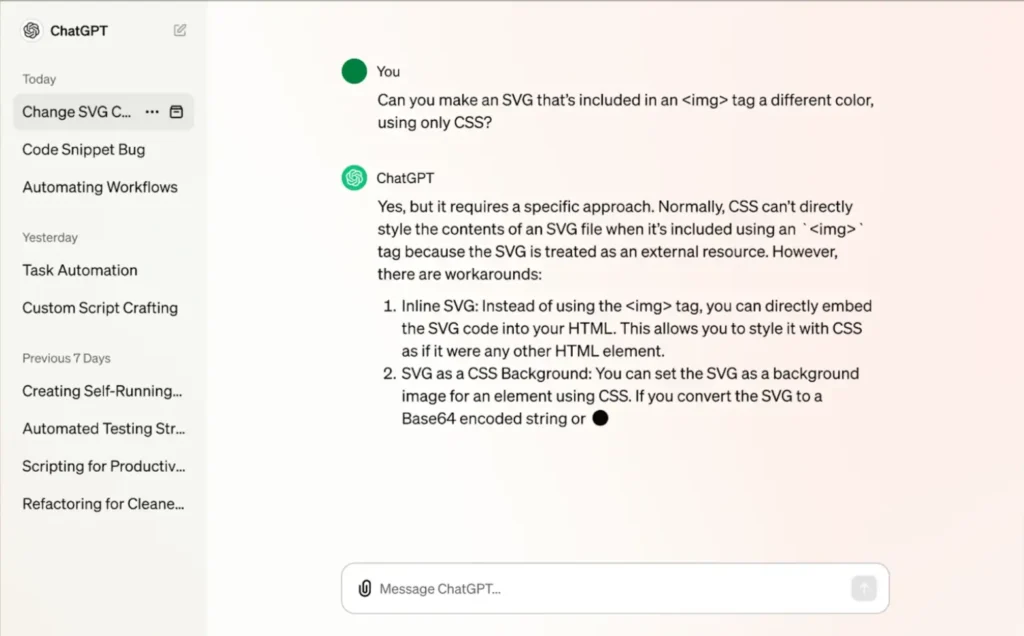
Features:
- Enhanced contextual understanding.
- Improved language generation with reduced biases.
- Advanced fine-tuning options for specific applications.
- Multilingual support with high accuracy.
Pros:
- State-of-the-art language understanding.
- Versatile applications across industries.
- Robust developer community and support.
Cons:
- High computational requirements.
- Premium pricing for advanced features.
Pricing:
Starts at $0.02 per 1,000 tokens, with enterprise packages available.
2. Adobe Sensei
Overview:
Adobe Sensei integrates AI and machine learning into Adobe’s suite of creative tools, enhancing functionalities like image recognition, video editing, and content personalization.
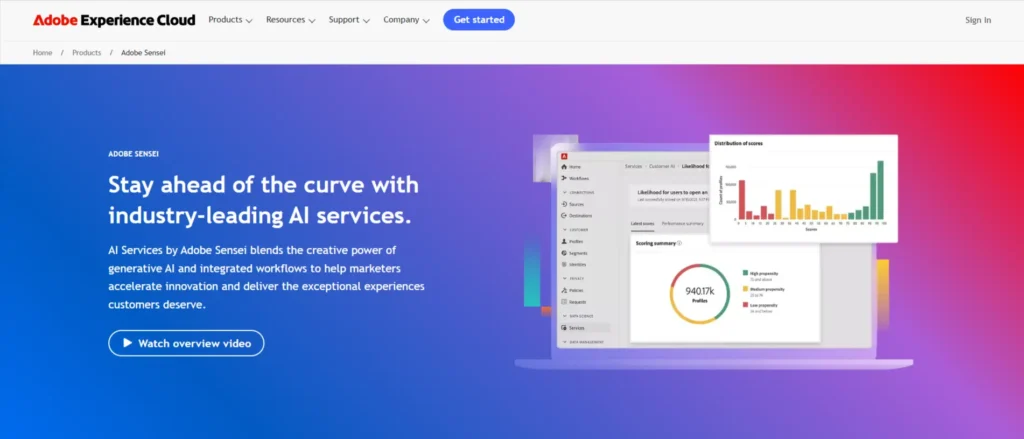
Features:
- Automated photo and video editing.
- Intelligent content recommendations.
- Advanced image and video recognition.
- Seamless integration with Adobe Creative Cloud.
Pros:
- Enhances creativity with intelligent tools.
- Streamlines editing processes.
- Robust support and extensive tutorials.
Cons:
- Requires Adobe Creative Cloud subscription.
- Steep learning curve for beginners.
Pricing:
Included with Adobe Creative Cloud subscriptions, starting at $52.99/month.
3. TensorFlow Extended (TFX)
Overview:
TensorFlow Extended is an end-to-end platform for deploying production ML pipelines, offering tools for data validation, transformation, and model serving.
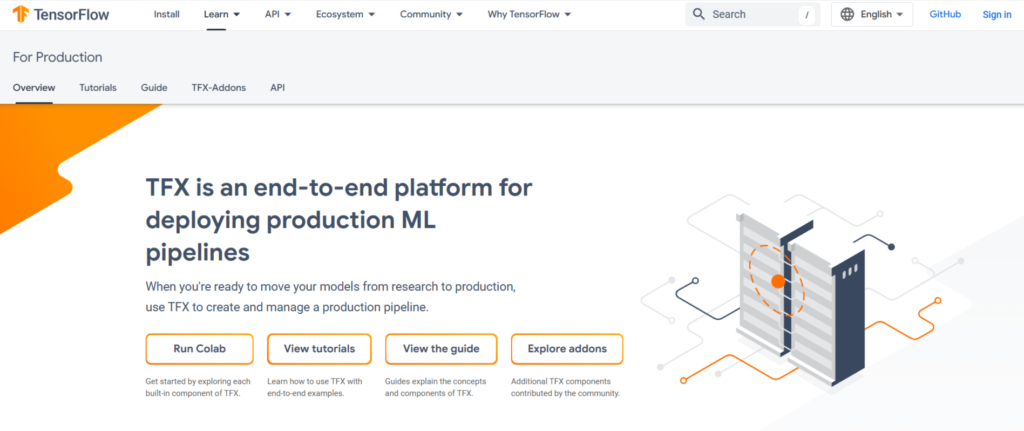
Features:
- Scalable and flexible ML pipeline components.
- Integrated data validation and transformation.
- Model deployment and serving capabilities.
- Compatibility with TensorFlow and other ML frameworks.
Pros:
- Open-source and highly customizable.
- Strong community support.
- Comprehensive documentation.
Cons:
- Requires expertise in TensorFlow.
- Complex setup for large-scale projects.
Pricing:
Free and open-source.
4. Hugging Face Transformers
Overview:
Hugging Face Transformers provides a library of pre-trained models for natural language processing tasks, facilitating easy integration and deployment.
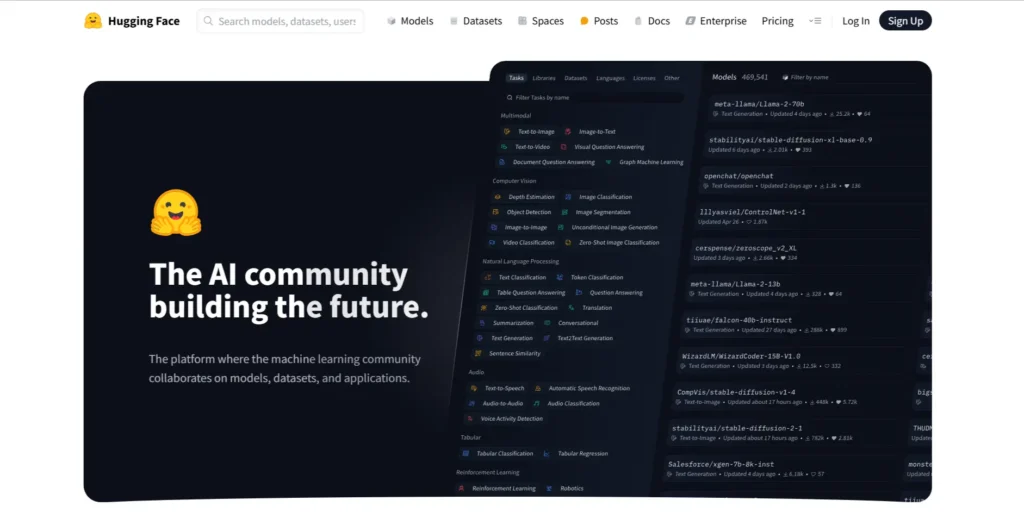
Features:
- Extensive library of pre-trained models.
- Support for multiple languages.
- Easy-to-use APIs for model integration.
- Community-driven model contributions.
Pros:
- Simplifies NLP model deployment.
- Active community and regular updates.
- Supports transfer learning for custom applications.
Cons:
- Limited to NLP tasks primarily.
- Requires understanding of model fine-tuning.
Pricing:
Free with optional paid plans for enterprise features.
5. Zapier AI Integrations
Overview:
Zapier leverages AI to automate workflows by connecting various apps and services, enabling seamless data transfer and task automation without coding.
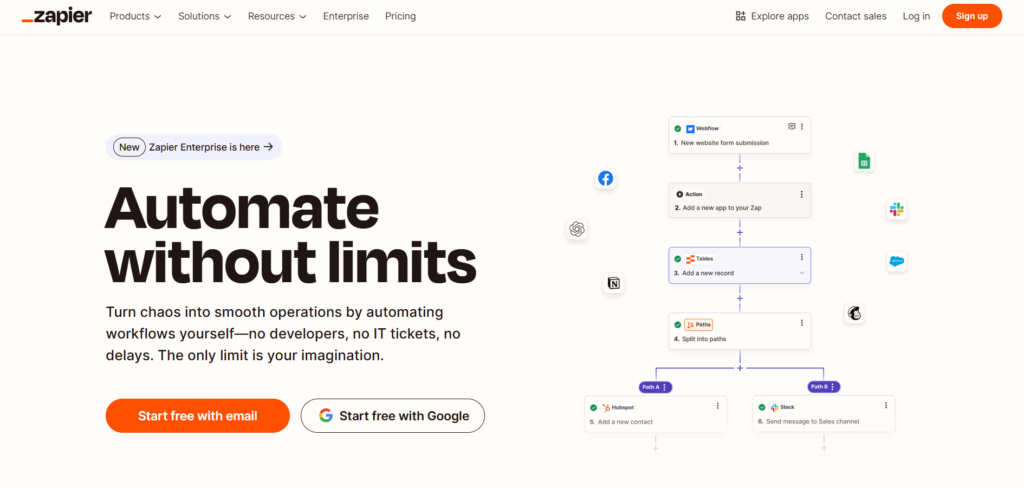
Features:
- Connects over 3,000 apps.
- AI-powered task automation.
- Customizable workflows with conditional logic.
- Real-time data synchronization.
Pros:
- User-friendly interface.
- Reduces manual workload.
- Enhances productivity with automation.
Cons:
- Limited customization for complex workflows.
- Dependent on third-party app integrations.
Pricing:
Free tier available, with premium plans starting at $19.99/month.
6. Microsoft Azure AI
Overview:
Microsoft Azure AI offers a comprehensive suite of AI services, including machine learning, cognitive services, and AI infrastructure, tailored for enterprise needs.
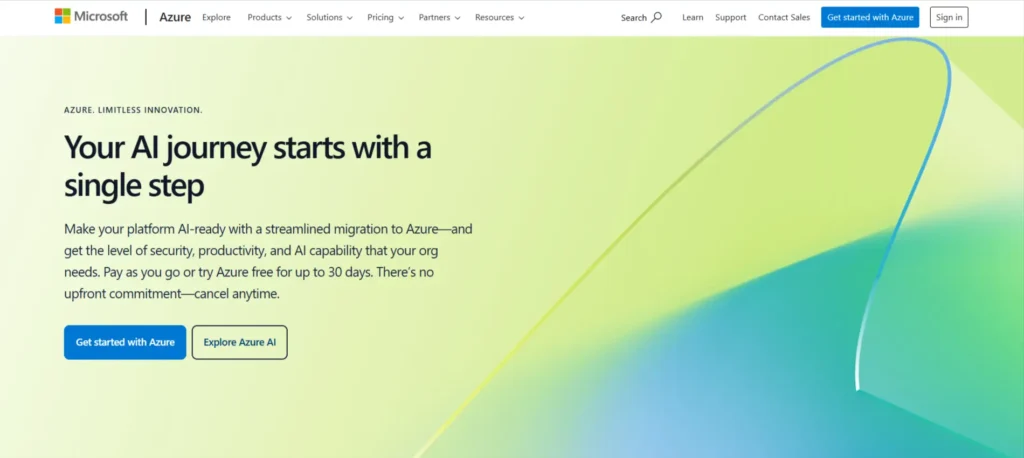
Features:
- Machine learning model development and deployment.
- Pre-built cognitive services for vision, speech, language, and decision-making.
- Scalable cloud infrastructure.
- Integration with Microsoft products and services.
Pros:
- Enterprise-grade security and compliance.
- Extensive AI service offerings.
- Seamless integration with existing Microsoft tools.
Cons:
- It can be expensive for small projects.
- Requires expertise to utilize advanced features fully.
Pricing:
Pay-as-you-go model, varying based on services used.
7. GitHub Copilot
Overview:
GitHub Copilot is an AI-powered code assistant that helps developers write code faster by providing real-time code suggestions and autocompletion. It’s an essential tool for developers seeking enhanced coding efficiency in the AI creator tech stack.
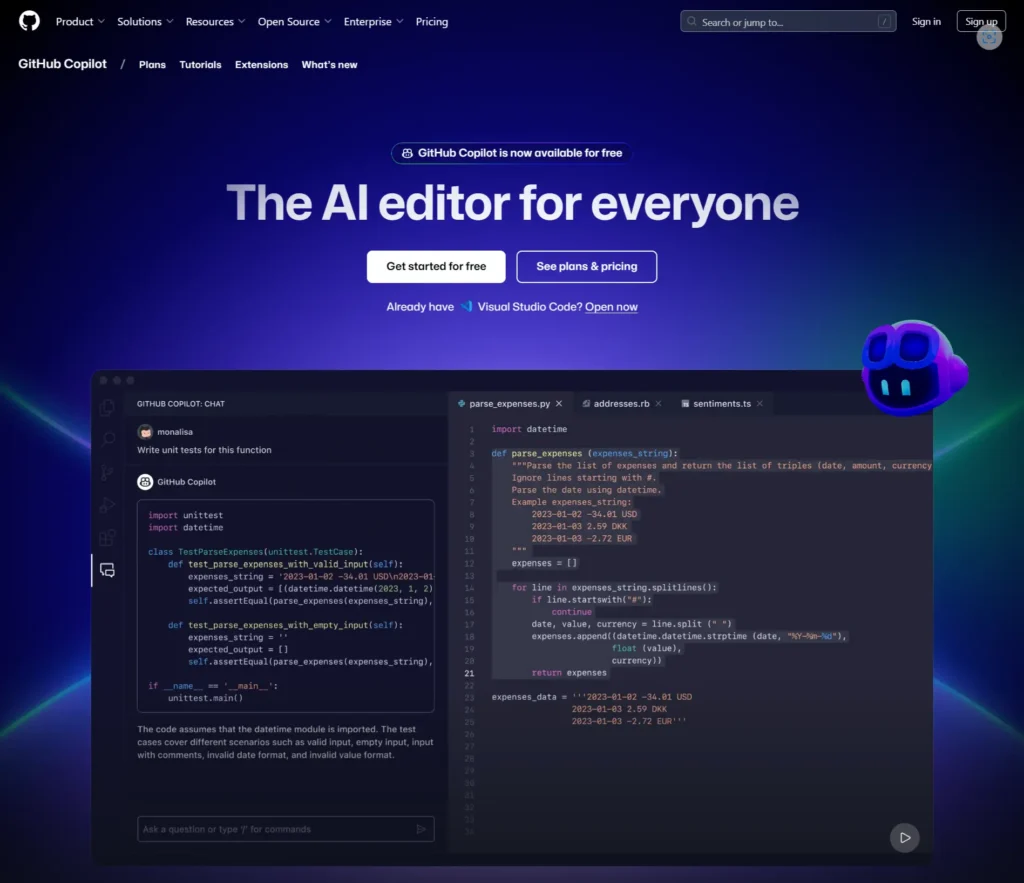
Features:
- Context-aware code suggestions.
- Supports multiple programming languages.
- Integrates seamlessly with popular IDEs.
- Learned from user interactions to improve suggestions.
Pros:
- Enhances coding efficiency.
- Reduces syntax errors and bugs.
- Supports collaborative coding efforts.
Cons:
- It may suggest insecure or suboptimal code.
- Privacy concerns regarding code suggestions.
Pricing:
$10/month or $100/year, with a free trial available.
8. DataRobot
Overview:
DataRobot offers an automated machine-learning platform that accelerates the process of building, deploying, and maintaining AI models.
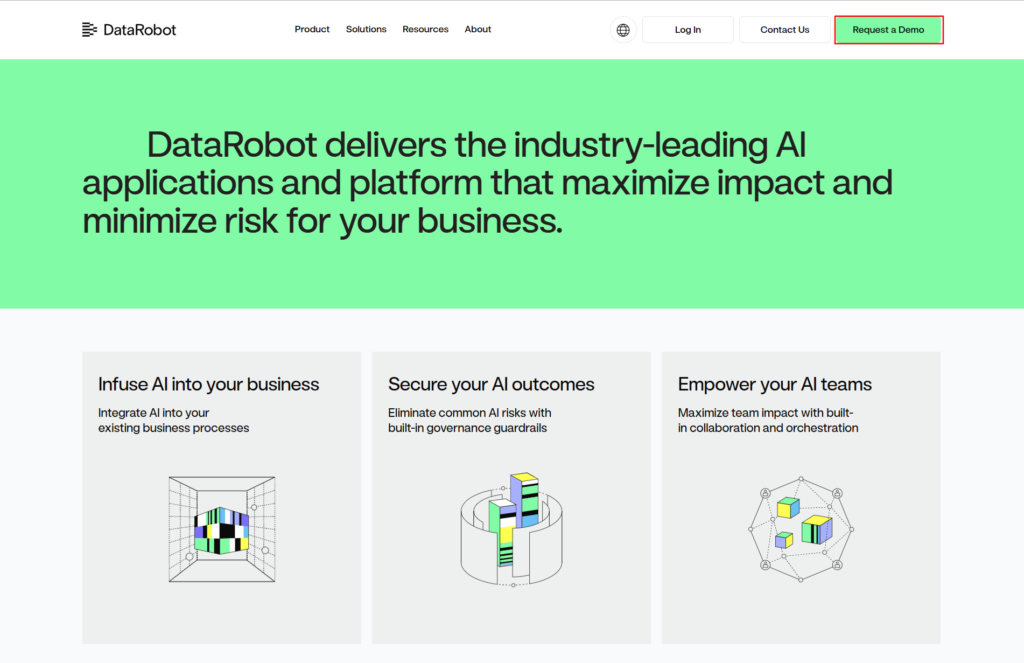
Features:
- Automated model building and selection.
- Integrated data preprocessing and feature engineering.
- Deployment and monitoring tools.
- Collaboration features for data science teams.
Pros:
- Speeds up model development.
- User-friendly interface for non-experts.
- Supports a wide range of data sources.
Cons:
- High cost for small businesses.
- Limited customization for specific model requirements.
Pricing:
Custom pricing based on enterprise needs.
9. Notion AI
Overview:
Notion AI enhances the popular Notion workspace with AI capabilities, assisting in content creation, task management, and project organization.
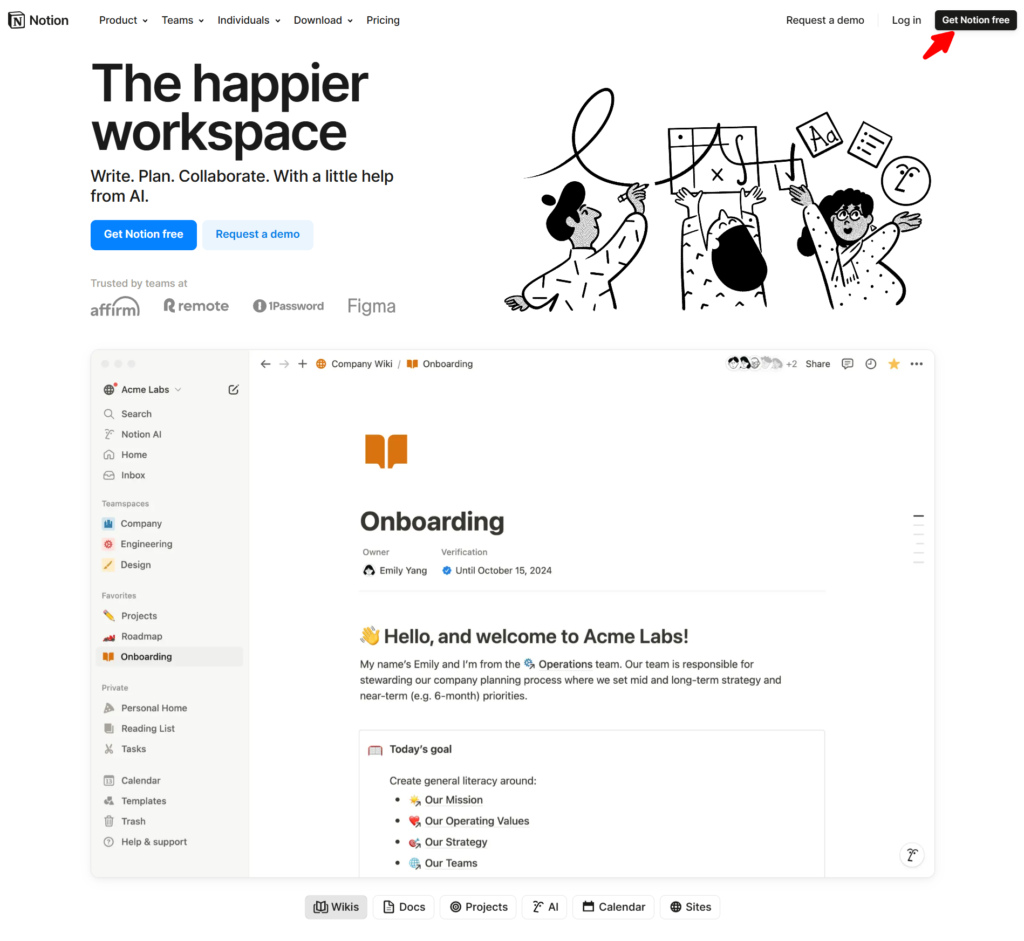
Features:
- AI-powered writing and editing tools.
- Automated task organization and reminders.
- Intelligent knowledge management.
- Integration with various productivity tools.
Pros:
- Streamlines workflow management.
- Enhances productivity with AI assistance.
- User-friendly and highly customizable.
Cons:
- Limited AI functionalities compared to specialized tools.
- Dependent on internet connectivity for AI features.
Pricing:
Included with Notion subscriptions, starting at $8/month.
10. Canva AI
Overview:
Canva AI integrates artificial intelligence into Canva’s graphic design platform, offering features like design suggestions, automated image editing, and content generation.
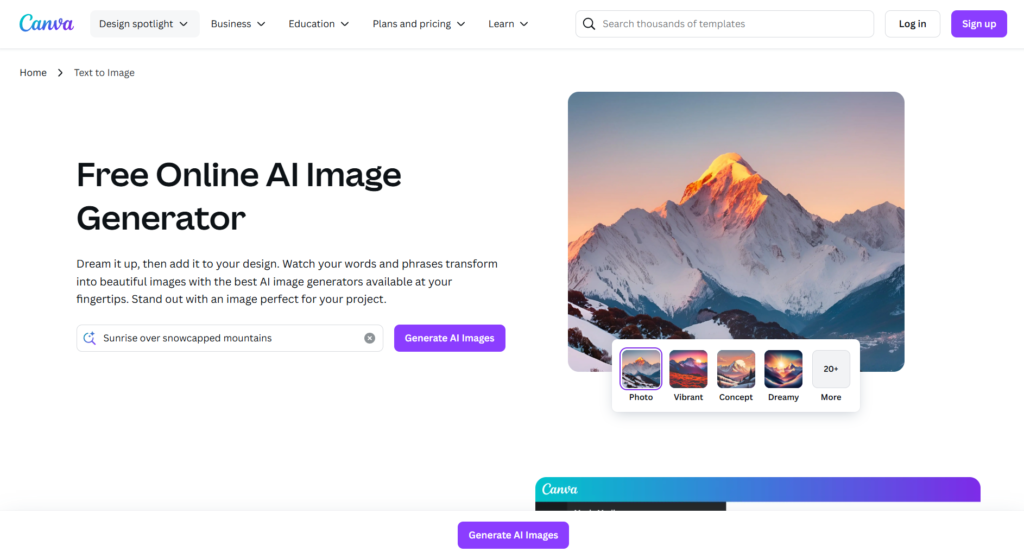
Features:
- AI-driven design templates and suggestions.
- Automated image enhancement and background removal.
- Content generation for social media and marketing materials.
- Collaboration tools for team projects.
Pros:
- Simplifies graphic design for non-designers.
- Enhances creativity with AI suggestions.
- Streamlines design workflows.
Cons:
- Limited advanced design capabilities.
- Some features are locked behind premium plans.
Pricing:
Free tier available, with premium plans starting at $12.95/month.
Comparative Analysis of AI Creator Tools
Table: Feature Comparison
| Tool | Core Features | AI Capabilities | Integration Options |
| OpenAI’s GPT-5 | Advanced language generation, multilingual support | Natural Language Processing (NLP) | API integrations, SDKs |
| Adobe Sensei | Automated editing, content recommendations | Computer Vision, Machine Learning | Adobe Creative Cloud |
| TensorFlow Extended | ML pipeline components, data validation | End-to-end machine learning pipelines | TensorFlow ecosystem |
| Hugging Face Transformers | Pre-trained NLP models, transfer learning | Natural Language Understanding | API integrations, SDKs |
| Zapier AI Integrations | Workflow automation, app connections | Task Automation | 3,000+ apps |
| Microsoft Azure AI | ML development, cognitive services | Wide range of AI services | Microsoft ecosystem |
| GitHub Copilot | Code suggestions, autocompletion | Code generation and assistance | Popular IDEs (VS Code, etc.) |
| DataRobot | Automated ML, model deployment | Automated Machine Learning | Various data sources and platforms |
| Notion AI | Content creation, task management | AI-powered writing and organization | Productivity tools integrations |
| Canva AI | Design suggestions, automated editing | Computer Vision, Content Generation | Canva platform integrations |
Pricing Models
- Subscription-Based: Tools like Adobe Sensei, GitHub Copilot, Notion AI, and Canva AI offer monthly or annual subscriptions with tiered pricing based on features and usage.
- Pay-As-You-Go: OpenAI’s GPT-5 and Microsoft Azure AI use a usage-based pricing model, charging based on the resources consumed.
- Free and Open-Source: TensorFlow Extended and Hugging Face Transformers are free and open-source, making them accessible for developers and researchers.
- Custom Pricing: Enterprise solutions like DataRobot and Microsoft Azure AI often require custom pricing based on the organization’s specific needs and scale.
Integration Capabilities
- Seamless Integration: Adobe Sensei integrates smoothly with Adobe Creative Cloud, enhancing the capabilities of existing Adobe tools.
- API and SDK Support: OpenAI’s GPT-5 and Hugging Face Transformers offer robust APIs and SDKs, facilitating easy integration into various applications and platforms.
- Ecosystem Compatibility: Microsoft Azure AI integrates well within the Microsoft ecosystem, supporting tools like Office 365 and Dynamics 365.
- Third-Party Connections: Zapier AI Integrations excels in connecting over 3,000 apps, enabling extensive workflow automation across diverse platforms.
Building Your AI Creator Tech Stack
Assessing Your Needs
Before selecting tools for your AI tech stack, it’s essential to assess your specific requirements:
- Project Scope: Define the scale and complexity of your AI projects.
- Skill Level: Consider the expertise of your team in using AI tools.
- Budget: Determine the financial resources available for tool subscriptions and integrations.
- Integration Requirements: Identify existing tools and platforms that need to integrate with new AI tools.
- Specific Features: List the must-have features that align with your project goals.
Selecting Complementary Tools
Choose tools that complement each other and address different aspects of your workflow:
- Data Processing: TensorFlow Extended for building ML pipelines.
- NLP and Content Generation: OpenAI’s GPT-5 for advanced language processing.
- Design and Creativity: Adobe Sensei and Canva AI for enhancing creative outputs.
- Automation and Integration: Zapier AI Integrations to streamline workflows.
- Collaboration and Management: Notion AI for project organization and team collaboration.
Best Practices for Integration
- Ensure Compatibility: Verify that your chosen tools can seamlessly integrate into your existing systems.
- Standardize Workflows: Develop standardized processes to maintain consistency across different tools and platforms.
- Leverage APIs: Customize integrations using APIs and SDKs provided by tools like OpenAI’s GPT-5 and Hugging Face Transformers.
- Regular Updates: Keep all tools updated to benefit from the latest features and security enhancements.
- Training and Support Training your staff to maximise the effectiveness and efficiency of the tools.
Future Trends in AI Creator Tools
Emerging Technologies
The AI landscape is continually evolving, with several emerging technologies set to shape the future of AI creator tools:
- Explainable AI (XAI): Enhances transparency in AI models, making them more understandable and trustworthy.
- Edge AI: Brings AI processing closer to data sources, reducing latency and improving real-time decision-making.
- Federated Learning: Enables training AI models across decentralized devices while maintaining data privacy.
- AI-Driven Personalization: Advances in AI will allow for more personalized and adaptive user experiences.
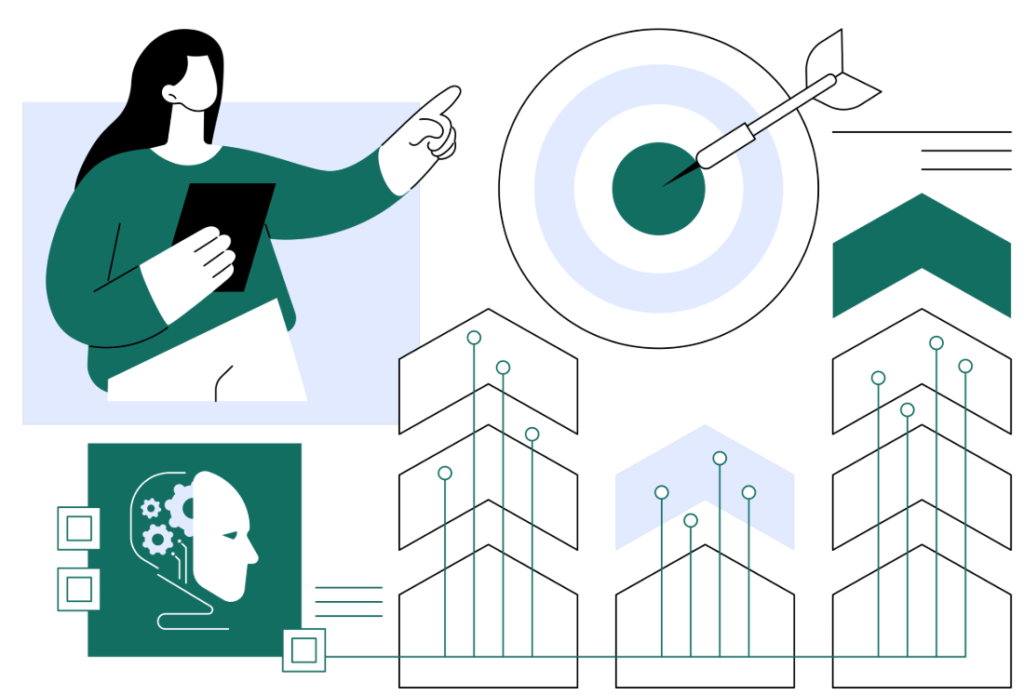
Predictions for 2026 and Beyond
- Increased Automation: AI tools will offer more autonomous capabilities, reducing the need for manual intervention in complex tasks.
- Enhanced Collaboration Features: Tools will integrate more advanced collaboration features, facilitating seamless teamwork across remote environments.
- Greater Accessibility: AI tools will become more user-friendly, lowering the barriers for non-experts to leverage AI in their projects.
- Sustainable AI: Focus on developing energy-efficient AI models to minimize environmental impact.
- Integration of Multimodal AI: Combining text, image, and audio processing in a single platform to enable more comprehensive AI applications.
Conclusion and Recommendations
Building a robust AI Creator Tech Stack is pivotal for AI product creators aiming to enhance their workflows, boost productivity, and drive innovation. The tools highlighted in this review—from OpenAI’s GPT-5 for advanced language processing to Adobe Sensei for creative enhancements—offer diverse functionalities that cater to various AI development and deployment aspects.
Recommendations:
- Start with Core Tools: Integrate essential tools like TensorFlow Extended for machine learning pipelines and OpenAI’s GPT-5 for natural language processing.
- Enhance Creativity: Utilize Adobe Sensei and Canva AI to elevate your creative outputs with intelligent design and editing capabilities.
- Streamline Workflows: Implement Zapier AI Integrations to automate repetitive tasks and connect disparate tools seamlessly.
- Foster Collaboration: Leverage Notion AI for effective project management and team collaboration, ensuring everyone stays aligned and productive.
- Stay Updated: Regularly review and update your tech stack to incorporate emerging tools and technologies that can further optimize your AI projects.
By adhering to this comprehensive content strategy and leveraging the tools discussed, your AI Creator Tech Stack will be well-equipped to meet the demands of 2025 and beyond. Focus on delivering unique value through in-depth analyses, personal insights, and actionable recommendations to ensure your content stands out and resonates with AI product creators seeking the best tools to enhance their workflows.
Frequently Asked Questions (FAQ)
What is an AI Creator Tech Stack?
An AI Creator Tech Stack is a combination of software tools and technologies that AI product creators use to build, deploy, and manage their projects. It includes tools for machine learning, data processing, collaboration, deployment, and more, ensuring seamless integration and enhanced productivity.
Why is a well-structured tech stack important for AI creators?
A well-structured tech stack enhances efficiency, scalability, integration, cost-effectiveness, and quality assurance. It automates repetitive tasks, supports project growth, ensures seamless tool integration, optimizes resources and maintains high standards in AI development.
How do I choose the right AI tools for my tech stack?
Examine your project’s requirements, team experience budget, integration requirements, and specific features. Choose tools that complement each other and address various aspects of your workflow. Be sure to use compatible APIs and provide appropriate training to your staff.
What are the emerging trends in AI creator tools?
Emerging trends include Explainable AI (XAI), Edge AI, Federated Learning, AI-driven personalization, increased automation, enhanced collaboration features, greater accessibility, sustainable AI, and the integration of multimodal AI.
How often should I update my AI Creator Tech Stack?
Regular updates are crucial to maintain relevance and efficiency. Conduct monthly trend analyses, quarterly deep reviews, semi-annual updates, and annual overhauls. Stay informed about competitor developments and industry changes to adapt your tech stack accordingly.



